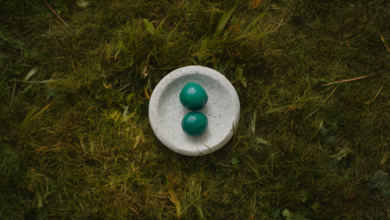Wool mats, known in German as “Wollmatten,” are more than just decorative or functional floor coverings — they are a perfect blend of comfort, durability, and natural sustainability. For centuries, wool has been one of the most cherished materials for crafting textiles, rugs, and mats. Today, wollmatten are gaining immense popularity due to their eco-friendly properties, luxurious texture, and ability to enhance the atmosphere of any space. Whether used in homes, offices, or wellness centers, wool mats represent a lifestyle choice centered on warmth, natural beauty, and environmental consciousness.
In this article, we will explore everything about wollmatten — their origin, benefits, uses, maintenance, and why they are a top choice for those who value quality and sustainability.
1. Understanding Wool Mats (Wollmatten): Natural Comfort at Its Best
A wool mat is a floor or surface covering made from natural sheep’s wool or other animal fibers. These mats are known for their soft texture, insulating qualities, and resilience. The term wollmatten encompasses a wide range of designs — from handwoven artisanal pieces to machine-made mats designed for modern interiors.
What makes wool mats unique is their natural elasticity and resistance to dirt, making them ideal for both decorative and practical use. Wool fibers contain lanolin, a natural oil that repels water and dust, allowing the mat to remain clean and fresh for a long time. Furthermore, wool is a renewable resource, which makes wollmatten an eco-conscious choice for sustainable living.
2. The History and Origin of Wool Mats
The use of wool for mats and carpets dates back thousands of years. Ancient civilizations such as the Persians, Greeks, and Celts crafted woolen textiles not only for warmth but also as a symbol of luxury and craftsmanship. In many cultures, wool mats were handwoven using traditional techniques, often passed down through generations.
In Europe, particularly in Germany and Scandinavia, wollmatten became popular for their natural warmth during cold winters. The thick wool fibers provided insulation from cold floors, while the intricate patterns reflected cultural artistry. Even today, handmade wool mats from regions like Bavaria and Tyrol are admired for their authenticity and superior quality.
3. Types of Wool Mats (Wollmatten) and Their Uses
Wollmatten come in many varieties, each suited for different environments and purposes. Below are some of the most common types and their ideal uses:
a. Traditional Handwoven Wool Mats
These are crafted using centuries-old techniques, producing unique patterns and textures. Each piece carries a cultural story, making it both an art form and a practical home accessory. They are perfect for living rooms, entryways, or cozy reading corners.
b. Felted Wool Mats
Made by compressing wool fibers through moisture and heat, felted wool mats are soft, thick, and non-slip. They are often used in yoga studios, wellness centers, or as eco-friendly bath mats due to their excellent absorbency and softness.
c. Decorative Wool Rugs
Decorative wollmatten combine modern design with traditional craftsmanship. Available in various colors and patterns, these rugs enhance the aesthetic appeal of interiors, adding warmth and elegance to bedrooms, offices, and lounges.
d. Industrial or Insulation Wool Mats
Wool’s natural insulating properties make it ideal for industrial use, such as soundproofing, temperature insulation, or padding. These functional wollmatten are also used in eco-construction projects as sustainable building materials.
4. Benefits of Using Wool Mats (Wollmatten)
The growing demand for wool mats worldwide is due to their numerous functional and environmental advantages. Here are the main benefits that make wollmatten a superior choice:
a. Natural Insulation
Wool fibers trap air, providing excellent thermal insulation. This helps keep rooms warmer in winter and cooler in summer, reducing energy costs.
b. Durability and Longevity
Wool is one of the most resilient natural fibers. Unlike synthetic mats that wear out quickly, wollmatten maintain their shape and quality for years, even under heavy use.
c. Hypoallergenic and Healthy
Natural wool resists bacteria, mold, and dust mites, making it ideal for allergy sufferers. Its ability to regulate humidity contributes to a healthier indoor environment.
d. Eco-Friendly and Sustainable
Wool is a renewable resource and fully biodegradable. Choosing wollmatten supports sustainable living and reduces the environmental footprint compared to synthetic materials.
e. Comfort and Style
Wool mats offer unmatched softness and luxury underfoot. Their natural texture and elegant look add warmth and sophistication to any interior design.
5. How to Care for Your Wool Mat (Wollmatte)
Proper maintenance ensures your wool mat remains clean and beautiful for many years. Although wool is naturally self-cleaning to some extent, regular care enhances its longevity.
-
Vacuum weekly to remove dust and prevent buildup.
-
Avoid excessive moisture; if cleaning is needed, use a mild detergent and cold water.
-
Blot spills immediately with a dry cloth instead of rubbing.
-
Rotate the mat occasionally to distribute wear evenly.
-
Professional cleaning once or twice a year keeps the fibers fresh and vibrant.
With proper care, your wollmatte can retain its natural softness, color, and texture for decades.
6. How to Choose the Right Wool Mat
When buying a wool mat, several factors determine its quality and suitability for your space:
-
Material Origin: Mats made from New Zealand or Merino wool are known for their superior softness.
-
Weave and Density: A tightly woven mat lasts longer and resists wear.
-
Purpose: Choose thicker mats for insulation or thin, decorative ones for style.
-
Design and Color: Select tones that complement your interior décor — neutral hues for minimalism, or bold patterns for artistic appeal.
-
Eco Certification: Look for mats labeled as organic wool or GOTS certified for guaranteed sustainability.
7. Wollmatten in Modern Interior Design
In contemporary homes, wool mats have evolved beyond functionality to become design statements. Interior designers appreciate them for their texture, warmth, and natural elegance. Minimalist spaces use plain, neutral wool mats to balance modern aesthetics, while rustic homes prefer handcrafted wool rugs with ethnic patterns for a cozy feel.
In corporate and hospitality environments, wollmatten are used to create a calm, inviting atmosphere while demonstrating eco-conscious values. Their versatility allows them to blend seamlessly into any design concept — from Scandinavian simplicity to luxurious contemporary styles.
8. Environmental and Ethical Aspects of Wool Production
Choosing wollmatten is not just a style decision — it’s an ethical one. Unlike synthetic fibers derived from petroleum, wool is biodegradable, recyclable, and renewable. Most ethical wool producers follow sustainable grazing practices that protect both the sheep and the environment.
When purchasing wool mats, it’s important to verify their ethical sourcing, ensuring no harm or exploitation occurs during production. Supporting such brands helps preserve traditional craftsmanship and encourages responsible textile manufacturing.
Conclusion: Why Wool Mats (Wollmatten) Are the Smart Choice
In a world dominated by synthetic products, wool mats stand out as symbols of natural quality and sustainable luxury. They combine comfort, durability, and environmental consciousness in one timeless product. Investing in a wool mat means investing in a piece of nature — something that brings warmth, peace, and harmony to your home.
Whether you value eco-friendliness, traditional craftsmanship, or pure comfort, wollmatten offer the perfect solution. They are not just floor coverings but a reflection of sustainable living and refined taste.
Frequently Asked Questions (FAQ)
1. What is a wool mat (wollmatte)?
A wool mat is a natural floor covering made from sheep’s wool, valued for its warmth, softness, and durability.
2. Are wool mats eco-friendly?
Yes, wool is 100% renewable, biodegradable, and sustainable, making wollmatten an environmentally responsible choice.
3. How do I clean a wool mat?
Regular vacuuming and gentle spot cleaning with cold water and mild detergent help maintain its quality. Avoid excessive moisture.
4. Do wool mats shed fibers?
Minor shedding is normal initially but decreases over time as the fibers settle.
5. Why choose wollmatten over synthetic mats?
Unlike synthetic mats, wool mats are breathable, non-toxic, and naturally regulate humidity, providing comfort and health benefits.




